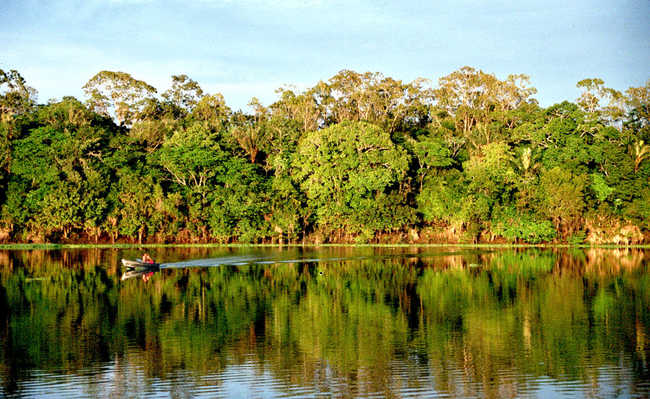Amazon Day: September 5th is for reflection
Amazon Day is celebrated on September 5th. Data inspires reflection on the importance of preserving the Amazon Forest

Edited and resized image by James Martins is available on Wikimedia and licensed under CC by 3.0
Amazon Day is celebrated on September 5 and aims to make people aware of the importance of the world's largest rainforest, whose biodiversity is connected to life across the planet and has been under constant attack. This date was chosen because it coincides with the creation date of the Province of Amazonas (currently the State of Amazonas) by D. Pedro II, in 1850.
- Amazon forest: what it is and its characteristics
- What is the Legal Amazon?
The Amazon
The Amazon is an 8 million km2 region that spans nine countries in South America, including Colombia, Venezuela, Ecuador, Bolivia, Guyana, Suriname, France (French Guiana) and Brazil. The latter owns 60% of the Amazon. In addition to housing the largest freshwater reservoir in the world, it has the greatest biodiversity on the planet, is located in the largest hydrographic basin in the world and has the largest river in the world by volume of water: the Amazon River, with 6,937 km in length - being a significant provider of ecosystem services and territory of native peoples.
The Amazon Forest is scientifically called equatorial broadleaved forest. It gets its name for presenting a vegetation with large and broad leaves; and for being close to the equator, being dense, perennial (does not lose its leaves throughout the year in any season) and hydrophilic (adapted to the presence of abundant water). It covers 40% of the Brazilian territory, in addition to occupying portions of the territories of Venezuela, Colombia, Bolivia, Ecuador, Suriname, Guyana and French Guiana.
In Brazil, the Amazon forest occupies practically the entire northern region, mainly the states of Amazonas, Amapá, Pará, Acre, Roraima and Rondônia, in addition to northern Mato Grosso and western Maranhão. It is estimated that it is home to 50,000 species of plants, 3,000 species of fish and 353 species of mammals, 62 of which are primates. To give you an idea, there are more plant species in one hectare of Amazonian forest than in the entire European territory.
Bees also have outstanding diversity. Of the more than 80 species of meliponíneas (stingless bees), about 20 are bred in the region. In the Amazon it is believed that around 30% of plants depend on bees for pollination, reaching in some cases 95% of tree species. It is still necessary to consider the diversity of invertebrate groups such as earthworms, which have more than 100 species in the region, being fundamental for the decomposition of organic matter.
Importance of the Amazon
The Amazon biome is of great importance for the planet's environmental stability. More than a hundred trillion tons of carbon are fixed in its forests. Its vegetal mass releases something around seven trillion tons of water annually into the atmosphere, through evapotranspiration, and its rivers discharge about 20% of all the fresh water that is discharged into the oceans by the existing rivers on the globe. In addition to providing relevant environmental services, these springs have hydroelectric potential of fundamental importance for the country, in addition to vast fisheries resources and potential for aquaculture.
In addition to its recognized natural wealth, the Amazon is home to an expressive group of indigenous peoples and traditional populations that include rubber tappers, chestnut trees, riverside dwellers, babassu trees, among others, which make it stand out in terms of cultural diversity.
In the Amazon, it is still possible for the existence of at least 50 indigenous groups that are remote and without regular contact with the outside world. Indigenous peoples have the best experience in maintaining the forest, and dealing with these peoples is essential to ensure the maintenance of the large areas of forest they inhabit.
The benefits of environmental services provided by the Amazon biome must be enjoyed by the people who live in its forests. Thus, developing strategies that capture the values of these services will be the long-term challenge for everyone who relates to and cares about this biome.
Despite its importance to the planet, the Amazon has been constantly threatened by numerous predatory activities. Risks to biodiversity in Amazonian forests include deforestation, logging, fires, fragmentation, mining, fauna extinction, invasion of exotic species, wildlife trafficking and climate change. Therefore, the Amazon Day invites people to be concerned about the Amazon Forest amid a worrying scenario of degradation.
- Amazon deforestation: causes and how to fight it
On Amazon Day and the rest of the year, do your part to preserve the forest. Press for stricter environmental laws and for their inspection and compliance. Pay attention to the products you consume and buy only those that are certified. Also, always prefer recycled and recyclable products and, if you really need to consume wooden items, look for reforestation wood.










